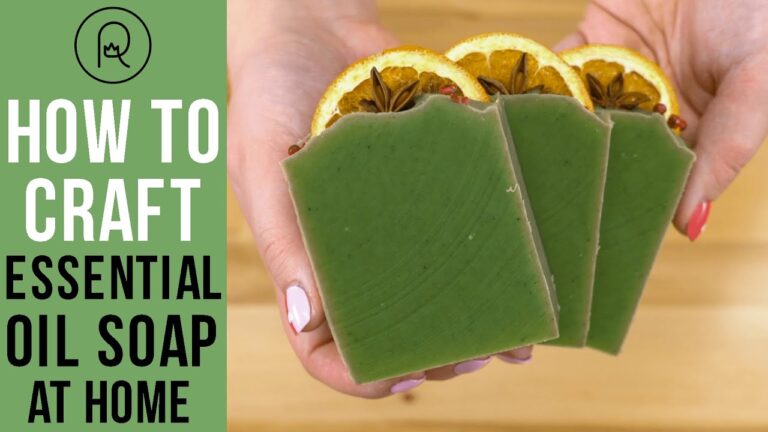In today’s environmentally conscious world, reducing our carbon footprint is more important than ever. One often overlooked area where this can be achieved is in the production of everyday items, such as soap. By making simple changes to the way soap is made, we can significantly decrease the amount of carbon emissions released into the atmosphere. In this article, we will explore some innovative ways to reduce the carbon footprint in soap making, helping to create a cleaner and greener planet for future generations.
What is the carbon footprint of soap?
The carbon footprint of soap can vary depending on factors such as production methods and ingredients used. In a study by Francke and Castro in 2013, the carbon and water footprint analysis of a soap bar produced in Brazil by Natura Cosmetics showed that the total carbon footprint for a 450 g soap bar cradle-to-grave was calculated using IPCC guidelines. This analysis highlights the importance of considering the environmental impact of everyday products like soap in order to make more sustainable choices.
Is homemade soap eco-friendly?
Homemade soap is indeed eco-friendly due to its reliance on natural ingredients and minimal packaging, unlike commercial soap production which often involves harmful chemicals and excess waste. By opting for natural soap making, individuals can contribute to reducing environmental impact through a low-waste and zero-toxin production process.
What are the environmental implications of the soap making process?
Soap making has a significant environmental footprint, with various stages in its life cycle contributing to pollution and resource depletion. From the extraction of raw materials to the manufacturing process, energy-intensive methods are used, resulting in greenhouse gas emissions and water pollution. Additionally, the packaging of soap products often involves plastic materials that further exacerbate environmental harm.
Moreover, the disposal of soap residues and packaging waste can lead to contamination of water bodies and soil, impacting ecosystems and wildlife. To mitigate these environmental implications, sustainable practices such as using biodegradable ingredients, reducing packaging waste, and promoting recycling are essential. By making conscious choices in the soap making process, we can minimize our impact on the environment and contribute to a healthier planet for future generations.
Eco-friendly Techniques for Sustainable Soap Production
Looking to create sustainable soap without harming the environment? Look no further. Our eco-friendly techniques for soap production prioritize sustainable ingredients and minimal waste, resulting in a clean and effective product that’s gentle on the planet. By utilizing natural and biodegradable materials, as well as energy-efficient manufacturing processes, we are committed to reducing our carbon footprint and promoting a healthy, eco-friendly future for all.
Green Solutions for a Greener Soap Industry
Innovative green solutions are revolutionizing the soap industry, paving the way for a more sustainable future. From biodegradable packaging to plant-based ingredients, companies are embracing environmentally-friendly practices to reduce their carbon footprint. These eco-conscious initiatives not only benefit the planet, but also appeal to consumers who are increasingly seeking out products that align with their values.
One key aspect of green solutions in the soap industry is the use of renewable energy sources in manufacturing processes. By harnessing the power of solar, wind, or hydroelectric energy, companies can significantly reduce their reliance on fossil fuels and decrease greenhouse gas emissions. This shift towards cleaner energy sources not only helps to combat climate change, but also sets a positive example for other industries to follow suit.
Moreover, the implementation of recycling programs and waste reduction strategies further enhances the sustainability of the soap industry. By collecting and repurposing used materials, companies can minimize their environmental impact and promote a circular economy. These efforts not only benefit the environment, but also contribute to a more efficient and cost-effective production process. Embracing green solutions is not only a responsible choice for the soap industry, but also a necessary step towards a greener future for all.
Overall, incorporating sustainable practices such as using renewable energy sources, minimizing waste, and sourcing ingredients locally can significantly reduce the carbon footprint of soap making. By making conscious choices and adopting eco-friendly techniques, soap manufacturers can play a vital role in preserving the environment for future generations. Making these changes not only benefits the planet but also promotes a healthier and more sustainable industry for all.



